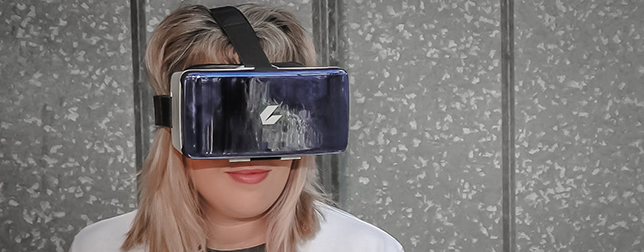Pimax, the developers of the first “8K” VR headset plan to send the preproduction unit, called M1, to the closed beta testing group of 10 participants this month. If the company receives green light from the testers, it will start the general launch in June for the Kickstarter project backers. The “8K” model will have a steady 80Hz refresh rate, while the “5K” model, due to be shipped in June, can reach up to 90Hz refresh rate, according to Pimax.
“We are very confident about M1. The plan is to start the shipments [to general backers] in June if the testers give the green light. As always, we will take the suggestions from the community into consideration to finalize Pimax 8K,” says Pimax.
Read more Samsung and Apple Reportedly Working on a Wireless AR/VR Headset
The China-based VR headset manufacturer said that it will pick the beta testers from a group of Kickstarter backers that were trusted community leaders, professional reviewer, or both,’ possibly pursuing the biggest potential social media presence.
It should be noted that the Pimax 8K VR headset does not create a full 7,680 x 4,320 resolution. Instead, it utilizes two 3,840 x 2,160 screens, which is more powerful than what Oculus Rift, HTC Vive, and HTC Pro currently produces. The screens actually combine to produce a 7,680 x 2,160 viewing area with an exceptionally wide 200-degree field of view. Labeling the product as the Pimax 4K+4K may result in a marketing blunder, and currently there’s no standard set by the industry to label VR resolutions.
While this new design employs two 3,840 x 2,160 screens running at a stable 80Hz refresh rate, the company is still working on boosting that number to the target 90Hz. The units received by the Kickstarter backers may still run at 80Hz, while the 5K unit will push frames at 90Hz. Surely, these headsets do not guarantee a VR experience running at those rates considering that the overall performance falls to the hardware configuration of the parent PC, especially when you add two 4K screens into the mix.
Read more Apple Could Release an AR Headset in 2021, Predicts Gene Munster
“Up to now, the 80Hz [refresh rate] is confirmed stable.[Eighty-two] Hz just passes the initial test standard, and now we’re trying to optimize on 85Hz and 87Hz [refresh rates]. [Ninety] Hz is the [theoretical] upper limit of the whole system,” the Kickstarter post reads. It goes on to list the 80Hz to 85Hz range as the “worst-case scenario” for the final product.
Funding for the company’s Kickstarter project started in September 2017 and ended 45 days later, bringing in 5,946 backers who pledged a hefty $4,236,618, greatly exceeding the original goal of $200,000.













